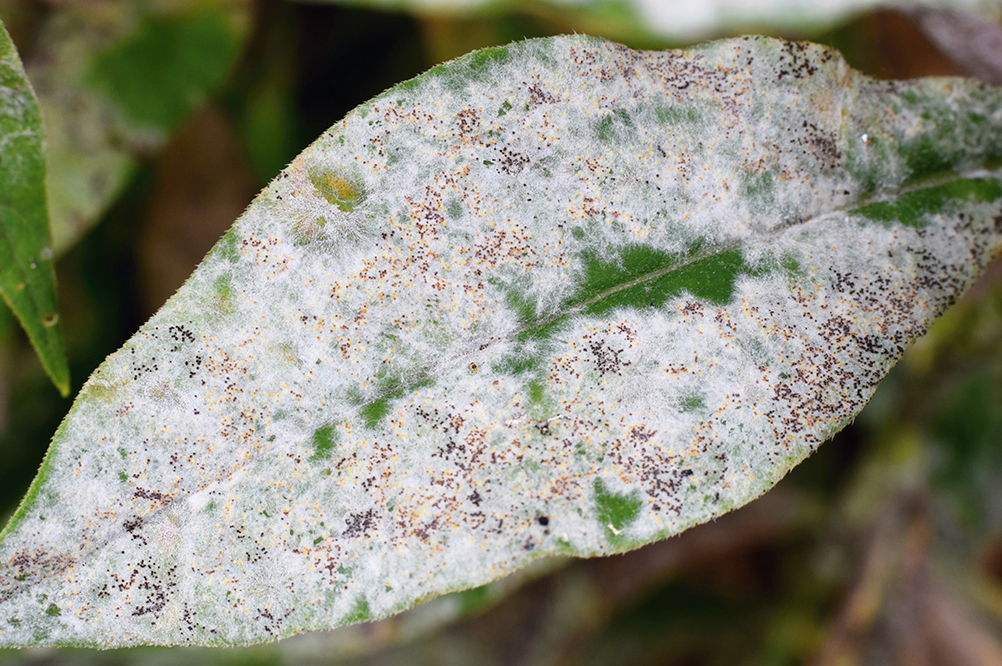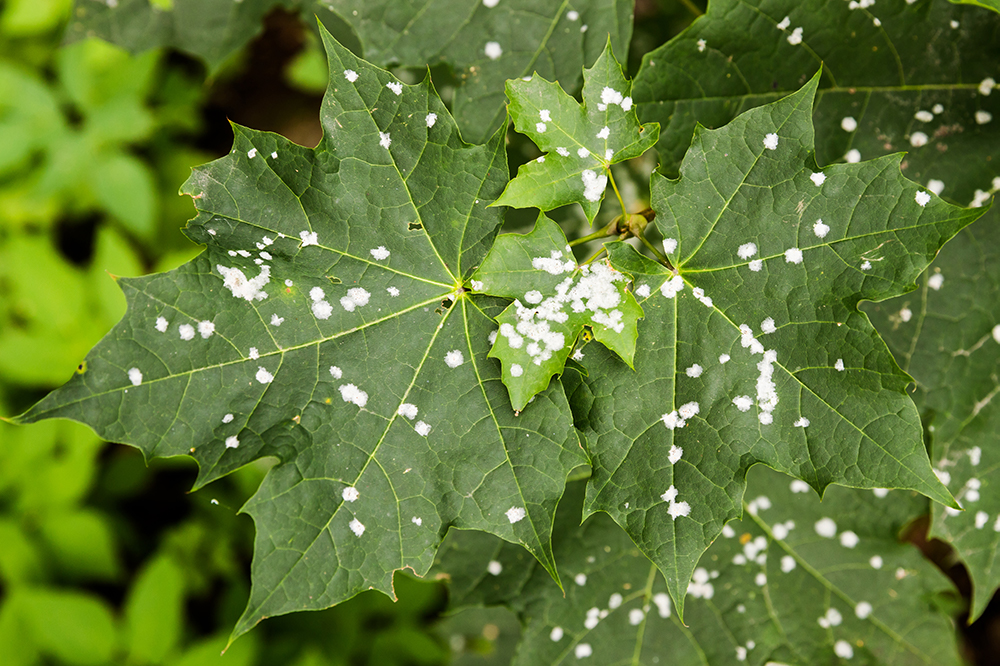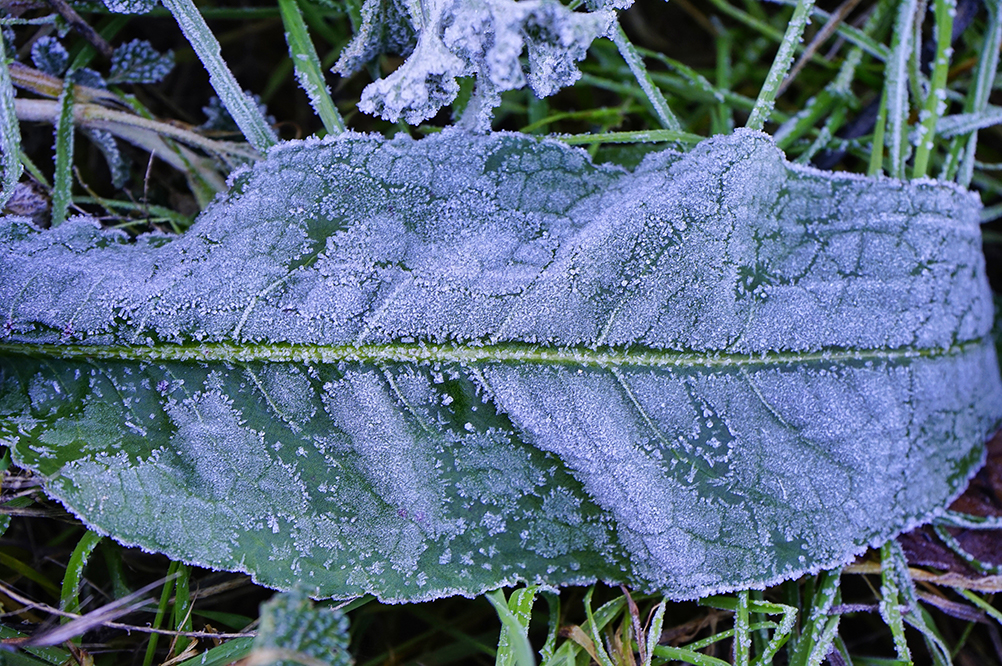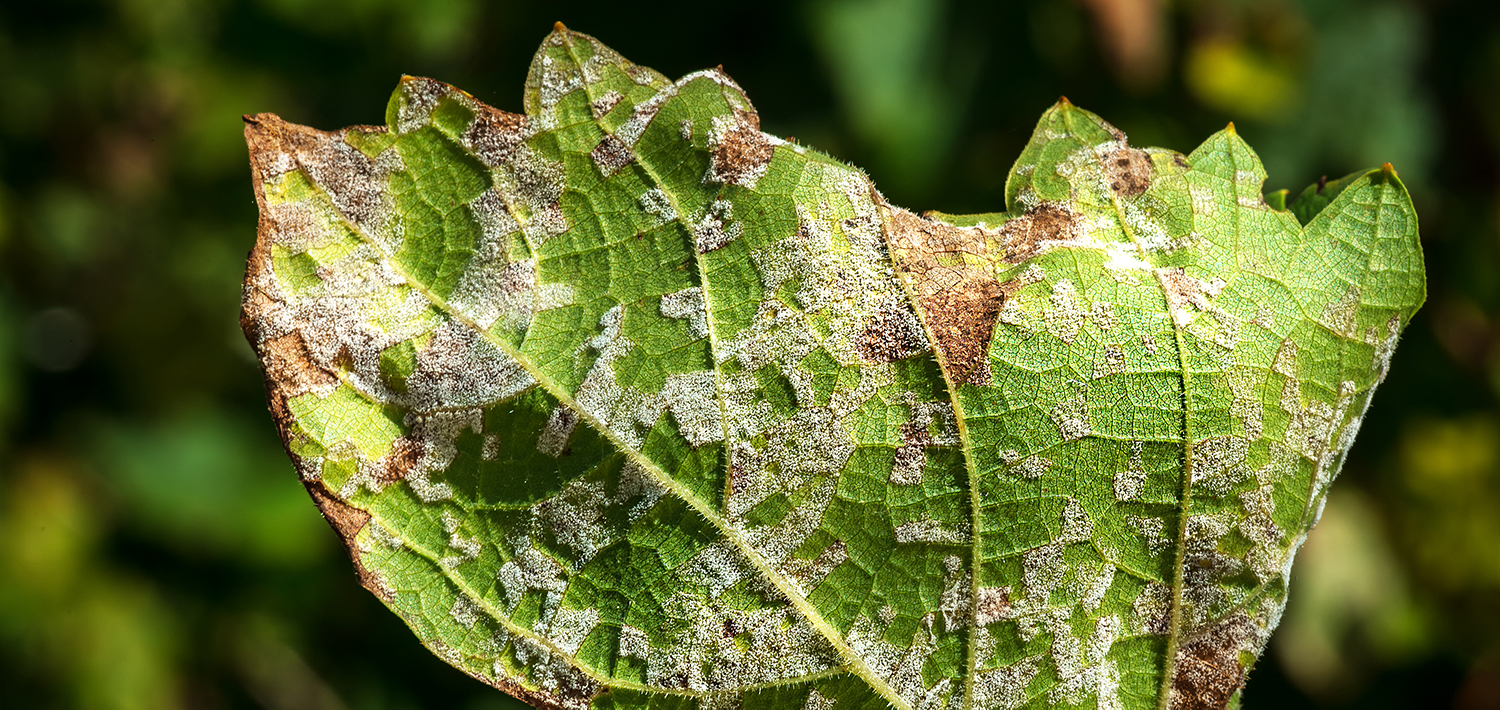We all want healthy plants in our garden. Healthy plants produce beautiful, vibrant flowers and abundant harvests. There’s nothing worse than discovering infected plants after you’ve spent countless hours trying to cultivate a successful garden while managing the various pests that might try to ruin it. Powdery mildew is one of the most common plant diseases that you could come across in your own growing operation. If you’ve discovered this invader in your vegetable patch or rose garden, you need the best fungicide for powdery mildew to kill the pathogen and prevent the disease from spreading.
I’ll take you through what powdery mildew is, how to spot it, and the best way to get rid of it in your garden.
Powdery Mildew

What Is It?
Powdery mildew is a fungal disease, and one of the most common plant diseases that you might encounter. Most avid growers, especially those that live in warm climates, have come across it at one time or another. It is caused by fungi, a type of plant pathogen. Fungal growth is encouraged by damp conditions that lack proper air circulation. The diseases associated with these pathogens can usually be easily recognized by the visible signs on the leaves of your plants.
Warm and dry conditions during the day, with cool, moist nights are the optimal environment for powdery mildew spores to thrive. But it’s not just one species of fungi that you have to watch out for, there are many different fungal spores that can cause powdery mildew in a wide range of different plants.
Unlike some plant diseases, powdery mildew will stress and weaken your plants, but it isn’t fatal. As bad as it looks, powdery mildew alone will not kill your plants. But it can make them more vulnerable to other pests and pathogens. Weak plants have a harder time fighting off diseases and won’t grow to their full potential, leading to poor yields.
Because the fungus grows to cover the plant leaves, it can inhibit photosynthesis. This affects major functions within your plant, and can diminish growth, productivity, and even alter the flavor of your vegetables or fruit. It can also deprive the plant of valuable nutrients, leading to loss of leaves altogether.
And it’s hard to come back from this damage. Once the disease has manifested to a point of ruining the leaves, you can’t undo the harm that will continue to limit your plants. That’s why the best pest management programs rely on preventing powdery mildew outbreaks before they take a hold of your plants, rather than trying to fight the disease after the fact.
What Does It Look Like?

So, how do you know if your plants have powdery mildew? The characteristic sign is infected leaves with a white powdery growth. It looks sort of like someone spilled a bag of flour in your garden, or like you have small spider webs stretching across the leaves of your plants. What you’re seeing is actually the fungal growth of the pathogen.
It will start as small white dots on the plant’s leaves, and progress until it covers more and more of the leaf. If you catch the infection at this early stage, it’s much easier to treat.
Make sure to check the underside of the leaves frequently when checking on your plants, because this is typically where you’ll see the disease first emerge. The underside of leaves don’t have the added benefit of direct sunlight, so the dark, damp environment is very susceptible to fungal growth. You might also notice this white-colored powder on the stems of your plants or on the buds after the fungus has begun to spread.
What Plants Can Get Powdery Mildew?
Most plants are actually susceptible to powdery mildew fungi. More than 10,000 plants can be affected by it. Some plants like roses, lilacs, cucumbers, and squash are more prone to the disease. But the good news is that the various species of fungi that cause powdery mildew are specific to the type of host plants that they infect. So, if you have an outbreak of powdery mildew on your pumpkin plants, that same spore won’t spread to infect your rose bushes.
These fungi grow increasingly well in areas with warm, dry weather during the day. The powdery mildew spores can live in the plant buds, and can even survive through the winter months in remaining residue from infected plants.
How Does It Spread?
Powdery mildew spores are most often spread to other plants by the wind. It might carry spores from an infected plant in your neighbor’s yard into your garden, or from an infected weed just on the edge of your flower bed.
They can also be carried to a new host plant by the movement of people. And if you have a dense flower bed or garden, this humid environment will encourage fungal growth. Close contact with one infected plant can then quickly spread to all of your plants.
How Can You Combat Powdery Mildew?
Fungicides are often the best way to manage powdery mildew in your garden. They can’t reverse the damage that’s already done, but fungicides can kill the plant pathogens responsible, and prevent the spread of the disease. They need to be re-applied regularly, about once every week or two, depending on the product.
You can also try other pest management techniques to treat powdery mildew and adjusting your environment so it doesn’t become the optimal environment for fungal growth. Pruning your plants regularly is a good idea to prevent unwanted humid conditions. Thinning the foliage will help improve air circulation, preventing a damp environment for the fungi to grow.

Avoid watering your plants from above, which can lead to moist leaves. Your plants need water at the root level, so providing water to the leaves of the plant doesn’t give them any added benefit, and can actually promote the growth of powdery mildew.
You should always remove infected leaves as soon as you notice them. The best way to mitigate the growth of fungal diseases is to get rid of any infected plants completely. But that’s not always possible without a significant impact on your yield or bottom line. At a minimum, you should cut off any parts of the plant that have visible fungal growth. And if you have a backyard compost, don’t add these to your pile, or you’ll risk spreading the disease back to your plants season after season!
You can look for plants that have been bred for powdery mildew resistance. You should avoid planting your susceptible plants in the shade, since this will promote wet conditions and encourage fungal growth. If you’re able to control the humidity level of your growing environment, like in a greenhouse, this will limit fungal infections as well. And even in an outdoor growing operation, you can make sure to give ample space between your plants when planting, to avoid creating those humid environments caused by overcrowding.
Fungicide Basics
What Are They?
Fungicides are pesticides that kill or inhibit disease causing fungal plant pathogens. They are often an important part of an overall pest and disease management program to protect plants and ensure high yields. The majority of crop losses around the world are due to fungi, and fungal diseases are very common, even in small backyard vegetable gardens.
Diagnose Before You Spray
Other pathogens like bacteria and viruses can cause plant diseases too. Some nutrient deficiencies can even cause damage to leaves and stunted growth, which can be mistaken for a disease. So, you need to diagnose the problem with your plants before you start applying any kind of pesticides. Even pests like mealybugs can be mistaken for powdery mildew.
Pesticides are all specially formulated to target specific problems with your plants. One size does not fit all here. If you want to improve the health of your infected plants or protect them from a specific disease, you need to make sure you’ve picked the right product for the application. Be sure of the underlying cause, and that the pesticide you’re using to treat it is intended for that purpose.
How Do They Work?
Fungicides are typically sprayed on to the plant surfaces, including leaves and stems. The application area is key because fungicides don’t move very well through plants.
Some systemic products can penetrate the surface of the plant and be absorbed, but many remain on the surface. Contact fungicides, which stay on the exterior of the plant where they are sprayed, create a protective layer, inhibiting the growth of certain fungi.
Fungicides are most useful for preventive plant health. They work best when applied before any symptoms of the fungal disease are present, acting as a plant health barrier. Fungicides should be applied periodically as a preventive measure to keep the fungal spores from propagating into a disease.
They can be used at the first signs of disease to kill spores and stop their spread, but they can’t fix the damaged leaves. At that point, the fight turns from being proactive to reactive, just trying to minimize the harm. And eventually if the disease is allowed to progress even further without some sort of intervention, an established disease may not respond at all to treatment.
There are many different fungal species, and not every fungicide is the right solution for each fungus. To get a good result, you need to first identify the fungus spore, and then pick your product based on what you need it to do.
Best Fungicide for Powdery Mildew
So, if you’ve diagnosed the problem and decided that you do in fact have powdery mildew infections in your garden, what fungicide should you use? There can be a lot of options on the market, and we want to help you find the right one for your growing operation.
Our Pick: Grower’s Ally Fungicide
Grower’s Ally Fungicide is a fungicide and bactericide, which means that it fights both fungi and bacteria. It is proven to kill and prevent powdery mildew and other plant pathogens.
This is a great, effective natural product, and it’s OMRI listed, so it’s acceptable for organic farming practices. The Grower’s Ally Fungicide is made from food-grade citric acid, and doesn’t contain any heavy metals, synthetic pesticides, or residual solvents.
It is a contact fungicide, so the product stays on the outside of your plants, without being absorbed. The protective layer of fungicide on your plant’s surface works to control fungal growth by dehydrating the fungi. New spores are not able to grow, so the disease can’t spread any further. You can effectively stop it in its tracks.
It does need to be re-applied every 10 days when used for preventive care, or every 5 days when used at the first sign of disease. But it can be used in so many different situations. This fungicide can be applied during any stage of plant growth, and can be used in greenhouse, hydroponic, indoor, or outdoor growing environments. And you don’t need any special protective gear to apply this fungicide because it’s natural and non-toxic.
It has no known phytotoxicity, so there have been no reports of adverse effects on any plants, which can sometimes be an issue for the active ingredients in natural fungicides. Grower’s Ally Fungicide is also safe for bees.
Conclusion
Powdery mildew is a plant disease caused by fungi. It results in a visible, white powdery fungus that grows on the leaf surfaces and other external parts of your plants. It is not lethal to your plants, but can be a very serious issue to deal with since it limits growth and productivity of your plants, and weakens them against other plant pathogens.
The best way to manage any plant disease is to prevent it from manifesting in your garden. You can do this through several strategies that reduce the humidity levels and the moist environments that fungi thrive in. Or you can rely on a natural fungicide, to not only prevent the disease when applied regularly before an outbreak happens, but also to kill the fungal spores and control the spread of an existing infection.
